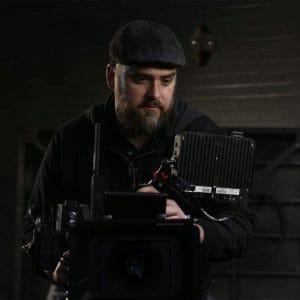What are common rates for camera operators, DPs, & DITs
Motion picture production work can be a great way to pave your way toward loftier Hollywood dreams or just get your hours on set to join one of the many technical unions.
To make either of these dreams come true, you need to know what you’re worth.
But that’s a tricky question.
Let’s dig deep and see what we come up with.
Daily Rates for Camera Ops, DPs, and DITs
First thing’s first, we need to know what kind of job you’re working.
There are two different rates for every job:
- Union
- Non-Union
Once you know what kind of job you’re working, you can determine the day rate.
Let’s start going through who does what and charges what.
Camera Operator
A camera operator is a person that records images, using a camera, for entertainment, news, sports, and more.
Their job is to run the camera and capture images that enthrall an audience.
But what does a camera operator charge?
Non-Union Camera Operator
A non-union camera operator’s daily rate is dependent upon the type of production they are working on and that production’s budget.
If you’re working with friends, maybe you give them a break, but you should set your quote and stick with it, so when people refer you to jobs they’ll know ahead of time.
On an independent film shoot (short or full length), they will typically take in somewhere between $400/$500 per day,
What about on something independent but a little bigger, like a non-union commercial?
On a commercial production (Corporate/Brand) a camera operator will make somewhere between $550/$650 a day.
So don’t let anyone bully you into taking less.
Now let’s talk about Union jobs.
Union Camera Operator
union job usually means a bigger production for a camera operator. These gigs might be for commercials, features, film, television, or news programs.
Work for can be lucrative when you’re part of a union, because they help set your rates. That means there’s a floor to what you can legally be paid.
So it’s much harder for an outfit to push you lower.
It might be harder to negotiate because they usually have set budgets, but the pay can be high no matter what.
Everything relies on the production’s budget.
Union Camera Operators typically make more money an hour and between $750/$1000 a day.
These rates are based upon the industry standard 10 hour day for any commercial production.
Any overtime beyond 10 hours tends to be paid at 1.5 times the hourly rate, unless negotiations are worked out for a different rate.
Standard Independent productions revolve around 12 hour days plus time and half OT.
Cinematographer (Director of Photography)
A cinematographer, or director of photography, is the person who is the boss of the camera and light crews on the set.
Directors of Photography help determine the look and feel of the project along with the director.
They work on films, television, movies, sports, news, and documentaries.
So what do cinematographers get paid?
So what do cinematographers get paid?
Non-Union Cinematographer (Director of Photography)
Much like the camera operator, non-union gigs run the gamut of pay. It all depends on who you are working for and the budget of their project.
You’re going to hear that a lot today.
Non-union DPs’ average rate is between $650 and $750 per day, for any commercial production.
Independent productions tend to land within the same range when it comes to cinematographers.
So what do union cinematographers usually get paid?
Union Cinematographer (Director of Photography)
Again, you know the drill. Unions guarantee you better pay by setting a floor.
Union DPs make around $1,200 a day or higher for any given commercial or film production. OT works the same for the entire crew.
An extremely seasoned DP with an impressive resume has the room to negotiate a higher rate and is hard to say what they actually bring in on average.
You can assume people like Roger Deakins and Rachel Morrison can make in the hundreds of thousands if not millions for certain projects.
So get to work!
Digital Image Technician
A digital imaging technician, or DIT, works in tandem with the cinematographer to establish a workflow, systemization, camera settings, signal integrity and image manipulation so that the highest quality image is received within a digital camera.
So how much does a DIT get paid?
Non-Union DIT
Same as the others, non-union depends on the budget but is open to negotiation.
Non-union digital image technicians make around $550 per day.
Same OT rates apply for the DIT.
You have to pay for the kit fee as well which typically goes for $350 a day unless you’re providing equipment, which isn’t recommended.
Union DIT
A Union DIT averages a slightly higher rate for both day rate and kit fee.
Usually between $600-900 a day.
You will typically need a video village for producers/stakeholders, that will run you around $700 on top of the kit fee.
DIT wages are dependent on what they bring to the table. If they have their own equipment, they’ll command more.
If they have to rent a kit, they’ll usually be paid less.
Summing up rates for camera operators, DPs, & DITs
When beginning your journey as a filmmaker and attempting to traverse the landscape and gain your footing, it can be challenging.
You want to make contacts and gather a reputation for hard work and accuracy, but you also don’t want to get screwed on pay.
You want to be firm, but not punch above your weight class.
The good news is that the more experience you get, the higher your rate climbs.
Always hold your integrity and choose wisely when agreeing to a lower rate on a production.
Now you know the average rates for camera operators, directors of photography, and DITs. Hopefully, this helps you negotiate whatever project comes next.
Till next time!


